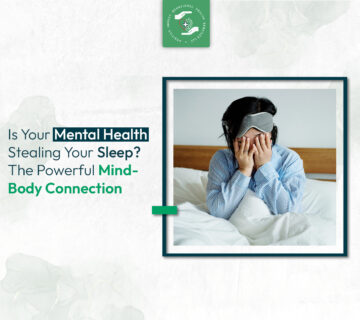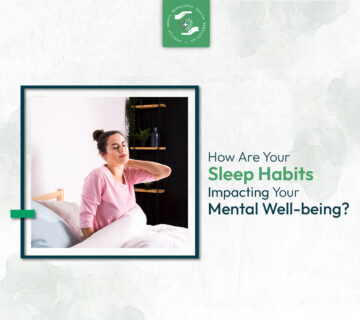ADHD, or Attention-Deficit/Hyperactivity Disorder, is much more than an inability to stay focused. It’s a nuanced condition affecting millions of people worldwide, from energetic children to ambitious adults. Unwrapping the layers of ADHD, we delve into how it’s diagnosed and the myriad ways it can be managed, turning challenges into stepping stones for personal growth and success.
Understanding ADHD: A Brief Overview
ADHD is not just about being hyperactive or easily distracted. It’s a neurodevelopmental disorder that affects both children and adults, influencing their ability to regulate attention, impulsivity, and, in some cases, motor activity. Understanding ADHD starts with recognizing its complexity and breaking down the stereotypes that often surround it. It’s about acknowledging the diverse manifestations of ADHD and tailoring approaches to meet individual needs.
Historically, ADHD was perceived as a condition affecting only children, with the expectation that they would ‘outgrow’ it. However, research now shows that ADHD can persist into adulthood, presenting unique challenges in daily living, academic achievements, and professional life. Recognizing ADHD early and accurately is crucial in managing its symptoms and leveraging the advantages it can also bring, such as creativity and hyperfocus.
Signs and Symptoms of ADHD in Children and Adults
Recognizing ADHD involves more than observing a child’s energy levels; it’s about understanding a range of behaviors. In children, ADHD symptoms may include difficulty following instructions, struggling to remain seated, and being easily distracted. Adults, on the other hand, might experience challenges with time management, staying organized, following through on tasks, and maintaining relationships.
While ADHD in adults is increasingly recognized, it often remains underdiagnosed. Many adults have developed coping mechanisms that mask their symptoms, making it harder to recognize and validate their experiences of struggling with attention and impulsivity. Awareness and education are key in bridging this gap, ensuring that both children and adults receive the understanding and support they need.
The Process of Diagnosing ADHD
Diagnosing ADHD is not about pinpointing a single symptom or behavior. It’s a comprehensive process that involves gathering detailed personal history, behavior observations, and often, standardized assessments. Health professionals, including psychologists and psychiatrists, play a pivotal role in evaluating the symptoms in the context of individual life experiences, ensuring that the diagnosis is accurate and reflects the person’s full profile.
An ADHD diagnosis is not arrived at lightly, nor is it based solely on visible behaviors or challenges in school or work performance. It may also involve ruling out other conditions that could mimic ADHD symptoms, such as sleep disorders, anxiety, or learning disabilities. Understanding the diagnostic process can demystify ADHD and pave the way for effective management strategies.
Behavioral Strategies and Support for Managing ADHD
Beyond medication, managing ADHD involves a mosaic of strategies tailored to enhance an individual’s ability to focus, stay organized, and complete tasks. This includes behavioral interventions, such as setting up routines, utilizing organizational tools, or engaging in mindful activities. Support from family, educators, and colleagues is crucial in creating an environment conducive to success.
For children, incorporating play-based learning and physical activity into their daily routine can improve focus and behavioral control. Adults, meanwhile, might benefit from cognitive behavioral therapy or coaching to develop skills in time management and prioritize tasks. These behavioral strategies not just cope with ADHD symptoms but also build on the strengths and capabilities of individuals.
Medication Options for ADHD: What You Need to Know
When it comes to treating ADHD, medication is often a key component but not the sole solution. Stimulants are the most common type of medication prescribed, known for their effectiveness in increasing attention and focus. However, healthcare providers may also explore non-stimulant options, particularly when stimulants are not well-tolerated or if specific side effects are a concern.
Alternative Treatments and Therapies for ADHD
Exploring the landscape of ADHD treatment unveils a range of alternative therapies beyond traditional medication. From dietary modifications and exercise to mindfulness meditation and neurofeedback, these approaches offer a complementary path to managing ADHD. While not a substitute for all individuals, they can be integral to a holistic treatment plan, offering tools for coping and enhancing well-being.
Given the personal nature of ADHD, what works for one individual may not for another. Therefore, it’s essential to approach treatment with openness, working closely with healthcare professionals to tailor a plan that addresses both symptoms and lifestyle, ensuring a balanced and effective strategy for managing ADHD.
Creating a Supportive Environment for ADHD at Home and School
For those living with ADHD, the environment plays a significant role in managing symptoms. At home, this may include creating structured routines, organizing living spaces to reduce distractions, and employing visual aids for task management. Schools and workplaces can contribute by providing clear instructions, allowing for movement breaks, and offering supportive resources tailored to individuals’ needs.
Empowering Lives Through Understanding ADHD
Navigating the world of ADHD is akin to piecing together a complex puzzle. With each individual’s unique experience, treatment becomes a tailored journey of self-discovery and adaptive strategies. From structured support at home and school to innovative medications and therapies, the goal is to empower those with ADHD to harness their distinctive skills and perspectives. It’s about transforming perceived obstacles into opportunities for creativity, resilience, and achievement.






No comment